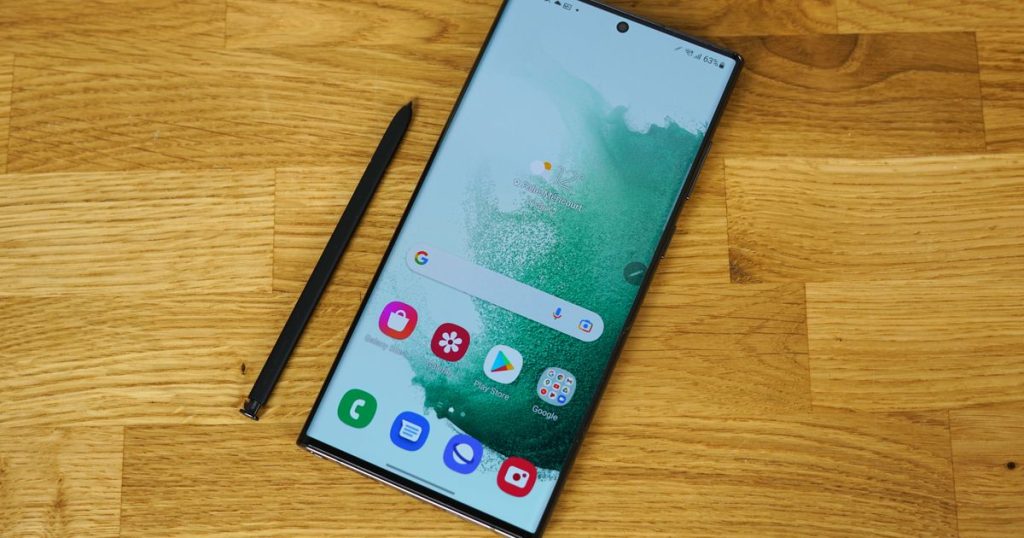
Samsung Galaxy S22 Ultra test: When the South Korean plays a new score
The Galaxy S22 Ultra retains the main 108MP sensor found in the Galaxy S21 Ultra, and is accompanied by f/1.8 wide-angle optics and laser autofocus. Its image block, integrated into the back cover, includes a 12 MP ultra-wide-angle sensor (f / 2.2), another 10 MP with 3x zoom (f / 2.4) and another 10 MP with an optical equivalent of 230 mm ( f / 4.9). In short, it is a set similar to what the Galaxy S21 Ultra offered for its time.
Wide-angle module: 108 MP, eq. 23 mm, f / 1.8
Daytime photography is not a problem for the Galaxy S22 Ultra, which uses an extension pixel binning To deliver images at 12 megapixels. The transmission from generation to generation highlights a treatment that favors the vibrancy of colours. The level of detail is high, although slightly lower than last year, and we particularly note a tendency for visual noise even in broad daylight.


Regarding the results that the S22 Ultra produces at night, we refer you to our article dedicated to “Nightography”:
108 MP
If we have reservations about the interest to move from pixel binning When fully familiarizing the main sensor of the Galaxy S22 Ultra at night, its performance during the day is much more interesting. We perceive more detail, which justifies the size of these shots at 108 MP. So it’s an option to consider for daytime photos that are preferably still.


Ultra wide angle unit: 12 MP, eq. 13 mm, f / 2.2
The elements specified in the wide angle shots also apply to the Ultra Wide angle of the Galaxy S22 Ultra. This is at least the case of noise, which can be spotted even on photos taken during the day. On the other hand, the somewhat aggressive treatment choice hit the bull’s-eye, and the enhanced contrasts make it possible to accentuate the small details of our scene. It also takes advantage of the colorful patterns, as well as the characters on the book cover, which we feel South Korean algorithms have perfected the content. However, rendering loses some of its scrolling nature.


The difference in the treatment applied to night shots between the 21 Ultra and the S22 Ultra is particularly evident. Samsung’s latest version favors exposure, even if it means rendering a shot with highly focused detail. However, the result provides a better readability.


3x zoom unit: 10 MP, f/2.4, eq. 70 mm
Changes made to software processing of snapshots are noticeable during the day. With contrasts that are intense, even very sharp, the manufacturer prefers a softer, and therefore more natural display. The embellishments are more subtle on the different elements, including the book cover…but digital noise is also more present.


No need to focus on the night results at 70mm which, if they display better with the Galaxy S22 than before, wouldn’t be much more usable.


10x zoom unit: 10 MP, f/4.9, eq. 230 mm


The above images speak for themselves: it’s best to keep the smartphone’s 10x zoom for well-lit scenes, or else you’ll lose essential information for your shots. On the other hand, during the day, despite the visual noise, this unit makes it possible to obtain images that definitely lack sharpness, but are generally usable.
Portrait mode, front sensor and video
Samsung offers several photo-taking options, including a basic portrait mode. The creator perfects his subject and makes an overall successful shot, which also allows customizing the blur effect in the subject’s background. For selfies, the choice of a 40 MP sensor (wide-angle optics f / 2.2) pays off and also allows you to choose between an ultra-wide angle (pixel binning at 10 megapixel) and a closer shot (6.7 megapixel).
The manufacturer also relies on a video clip that it offers several options, ranging from the ability to shoot up to 8K at 24 frames per second, with HDR technology and a neat stabilization system. Video lovers benefit from a wide range of features. Note that also in photography, even the most expert can try out the Expert RAW app (available in the Galaxy Store) to customize their shots as desired.

“Incurable web evangelist. Hipster-friendly gamer. Award-winning entrepreneur. Falls down a lot.”
